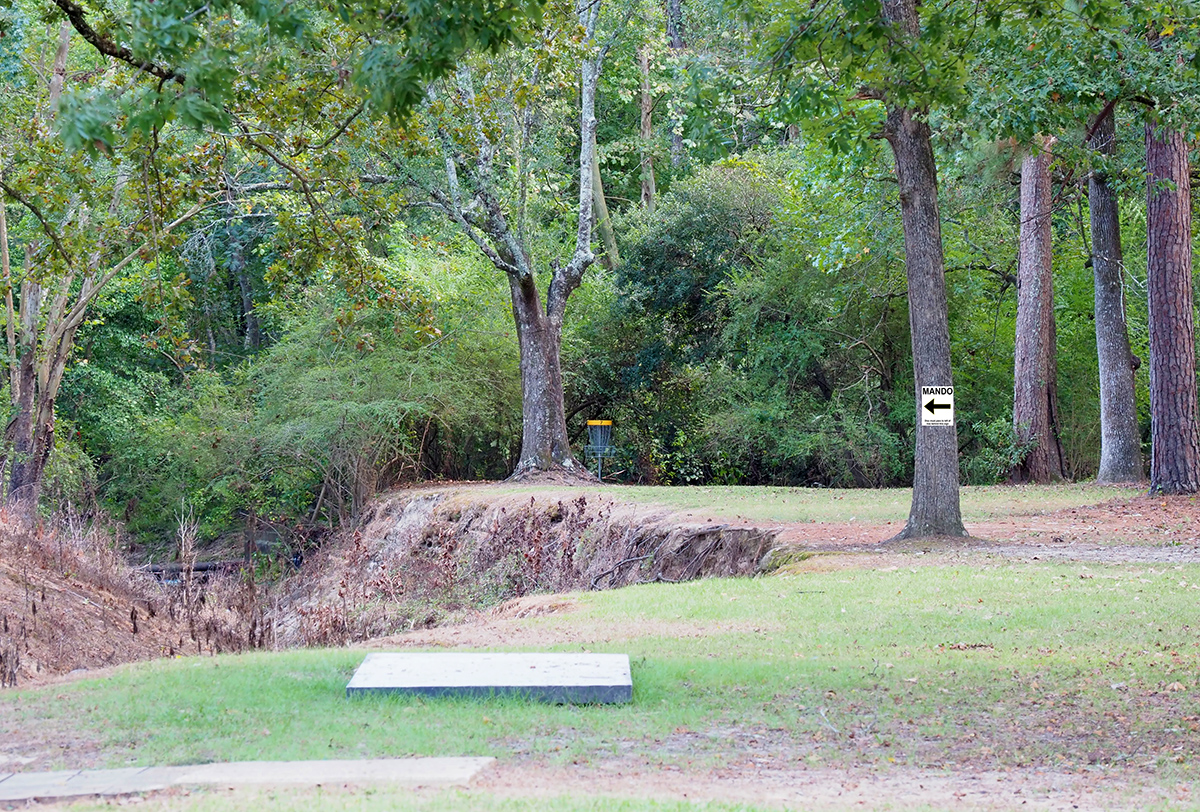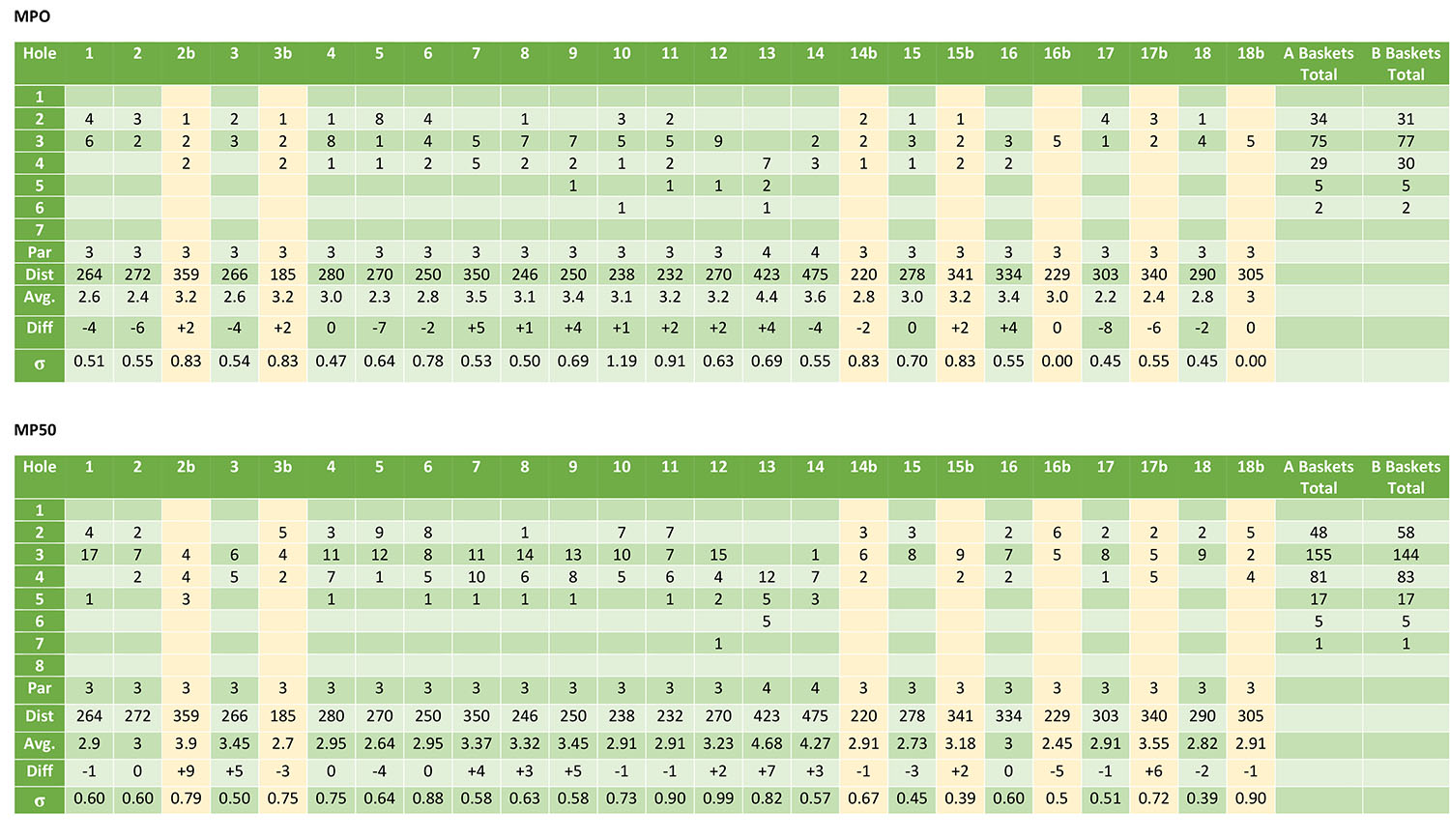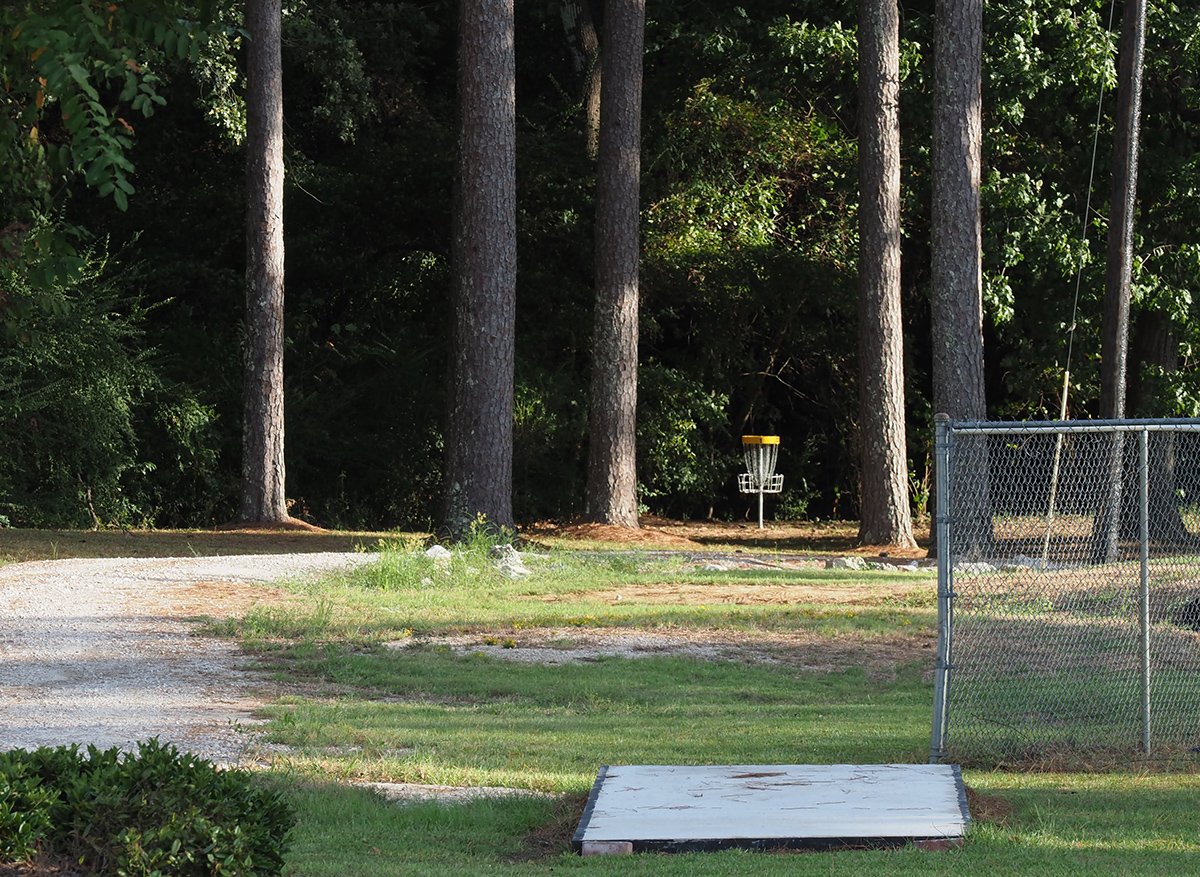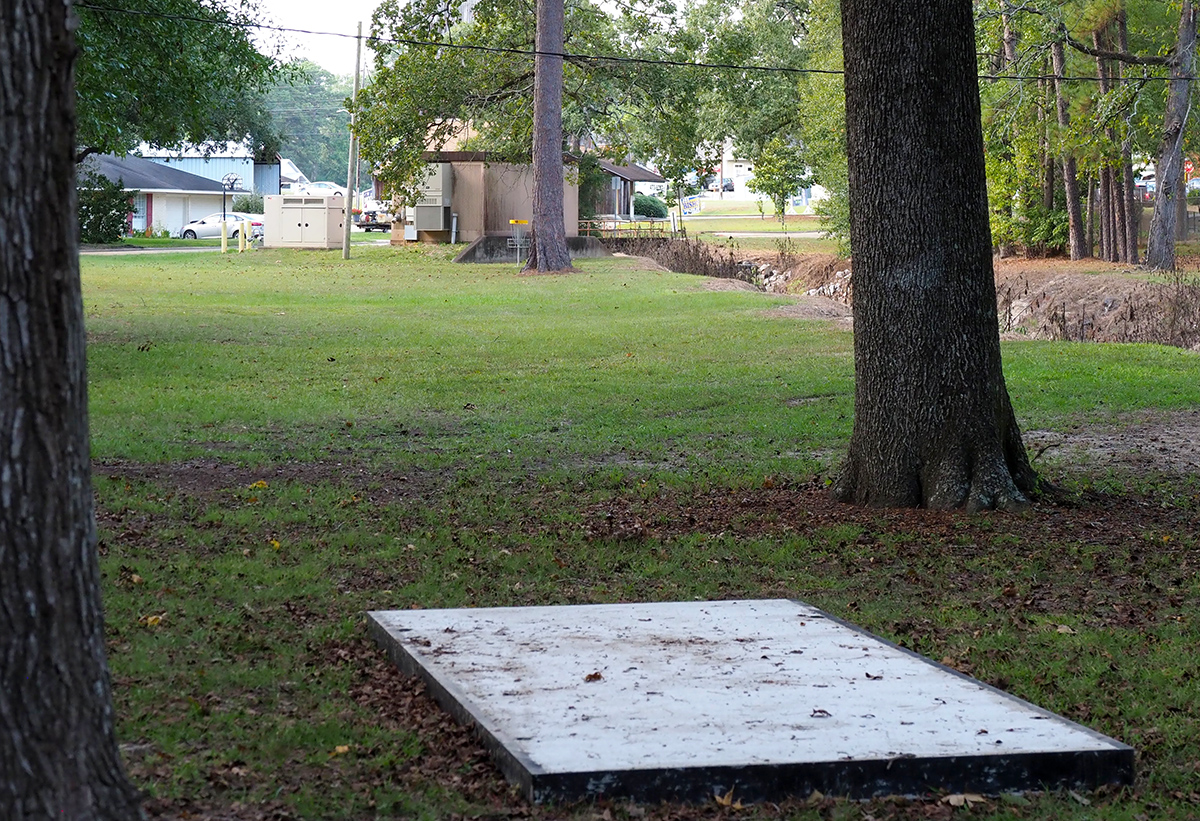Congrats on the new course! Sounds like it was a long time coming, and took some real thought and real work to make this a reality. You definitely had some fun constraints!
What leaves me curious, is to see if my suspicions are well-founded or not: there are a relatively large number of holes that are pretty short (especially for MPO and MP50) that have a very low number of birdies. I am talking about 1 (MP50s), 3 (MP50s), 4 (both), 8! (both), 9! (both), 12 (both), 18? (both). 13 would seem to apply too (no 3's on a 423' hole). That is 8 of 18 holes - almost half the course.
What that tells me is that on a 260' hole, for instance, there are 2 throws almost 'required' to get to the circle. 260' is fun for most skill levels, but two 130' throws.....not so much. Are the intended throws forced (boring) or just plinko (random - not a good measure/reward of skill)....or something else? I have a hard time imagining that on at least several of these, players encounter NAGS situations (from John Houck's articles, not a golf shot). It is possible that some putting areas are extremely difficult which of course would add to scoring averages.
From the one picture you posted (and the streams - love them!), I would love to visit your course one day!
It is difficult to describe some of these holes adequately, so I'll try to use photos where I can.
Hole 1:
There is a dead straight line, but the safer line is a RHFH shot around the 2 large pines to the left but short of the pine furthest left. It is not a terribly difficult hole. The fence largely blocks RHBH hyzers, but is plenty far enough away from the tee to keep from interfering with a throw (about 6 feet from the front right corner of the tee box). There is an OB creek directly behind the basket about 10 feet. For this tournament, the TD (not me) placed placed a mando left arrow on the utility pole on the right. The course sign will be right above the fence at the corner preventing high RHBH hyzers when it is installed in a week or two.
Hole 3:
I don't have photos of hole 3. It is a somewhat narrow fairway (25' wide at the end) that bends to the right at the end. RHFH or LHBH are the only consistent ways to get into the circle AFAIK.
Hole 3a:
This is a shorter basket placement, dead straight, narrow fairway with an OB creek about 15' to the left of the basket with tall brush/short trees guarding the basket on the left, i.e. creek side. So an RHFH approach depends upon the flora not dropping your disc into the OB creek. Lots of people throw a RHFH drive trying for birdie on a very short hole. An RHBH shot that turns a little or is dead straight will get you a birdie, but the fairway is not wide.
Hole 4:
This is a fairway split by a large tree into two narrow fairways. The basket is on a slope that falls off steeply to the right. What I find on this hole, personally, is that it isn't hard to hit one fairway or the other RHBH, but it is hard to do it with enough power to get into the circle. RHFH is easier to control, but fades the wrong way for the slope at the end. There is OB far to the left, but is hard to hit and I don't think any of the MPO, MP50 or MA players were OB.
Hole 8:
Hole 8 is a straight, narrow, low-ceilinged fairway with the circle creating a dogleg left at the end and a short, upward 7'-8' elevation change within the circle. This requires a dead straight shot that that lands at the right range to give a 20' uphill putt for birdie. There is also a less clear opening for a hyzer. This hole could probably use a little clearing to make it a little easier to get close to the basket. I am counting on foot traffic to clear this hole a little, but may need to help that along.
Hole 9:
This is a bit of a problem child hole. It has a low-ceilinged, split, left-turning fairway leading to a "landing area" at the base of a hill with the basket at the top of the hill about 18' higher in elevation than the tee box. A low throw of appropriate power can put you in good shape for an uncomplicated upshot. A short or long throw can get you in trouble. This is not a difficult hole to par. There is a high RHBH birdie route that is exceedingly tight and a much clearer tomahawk route that can result in a birdie putt, but that comes with a lot of OB and lost disc treachery. That this didn't play as the second most difficult hole probably speaks tot he conservative approach used by most.
Hole 12:
This hole has 2 fairways. One out over the creek to the left that risks OB for a birdie try and the other, to the right, through a tight opening between trees that is an extraordinarily difficult birdie and a par of reasonable difficulty. The difficulty with the birdie on the right route is the fairway is such that getting in the circle off the tee requires a perfect shot through a very small, high window. The left, over-the-creek route likely needs some trimming. There is also a tomahawk route that risks landing in heavy brush for a chance at birdie. One of the locals birdies this with a tomahawk regularly.
Hole 13:
This is just a tough hole. The fairway runs about 175' to a 90 degree dogleg right. The second part of the fairway is about 15'-20' wide for approximately 175' before splitting and then opening up to a circle on an uphill slope. It is possible to cut the corner some on the dogleg, but the more you cut, the more trouble you court. I have 3'd this hole. I have 6'd this hole. A 3 requires that the first two throws be perfect. It's too hard. I know it's too hard. I guess that I have viewed this hole as a must par hole, and it's a fairly difficult par. This hole is one reason why I had hoped for more MPO players and, perversely, probably one of the reasons that few came. It will take a day's work with a chainsaw to make this hole appreciably easier.
Hole 18:
18a and 18b are roughly the same length. Only the 18a basket was installed when the picture below was taken.
18 is a throw in the opposite direction of 7 with the ditch on the right and the basket about 10' from the edge of the ditch. The top edge of the ditch was marked OB for the tournament. My signs list the water in the ditch as marking the OB line. There is a small driveway leading from the street to the small equipment building behind the basket. The 18b basket is in the corner of the park that is bounded on the left by the street and the back-right by the driveway. The same throw up the middle can give you a putt at either basket, but it's a death putt. The MPO players mostly played conservative on both rounds.



